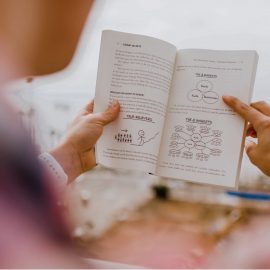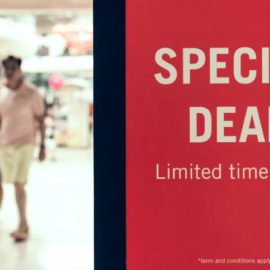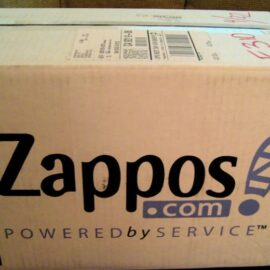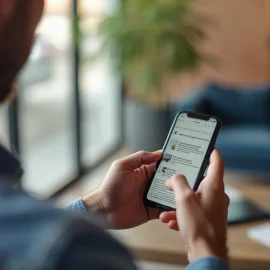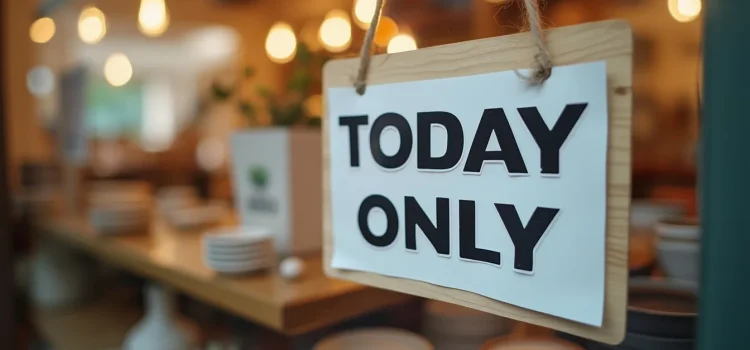
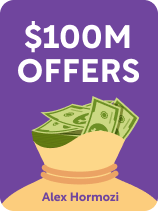
This article is an excerpt from the Shortform book guide to "$100M Offers" by Alex Hormozi. Shortform has the world's best summaries and analyses of books you should be reading.
Like this article? Sign up for a free trial here.
What makes customers rush to buy a product? Why do limited-time offers create such a powerful urge to purchase?
Scarcity marketing techniques can boost both sales and perceived value, turning ordinary products into must-have items. These strategies tap into basic human psychology and our natural desire for exclusive or hard-to-get items.
Read on to discover how to increase demand for a product and transform casual browsers into eager buyers.
Increase Demand for a Product
Alex Hormozi explains how to increase demand for a product through creating a sense of scarcity by limiting the quantity of your product and by limiting the timeframe when people can buy it. Hormozi writes that scarcity plays on our natural inclination to value what seems rare or exclusive and can ramp up both demand and the perceived value of your product, meaning people will pay a higher price for it.
(Shortform note: According to psychology research, wanting what’s hard to get is a common phenomenon. It happens because your brain releases dopamine when you work toward a goal and the more difficult that goal is (in this case, acquiring something that’s hard to get), the more dopamine your brain produces. In other words, scarcity works like a drug: When people are trying to get something rare, they’re really chasing a dopamine high.)
Limited Quantity & Limited Time Frame Promotions
Hormozi describes the following ways to create scarcity around the quantity of product:
- Offer a limited number of products or bonuses.
- Announce one-time-only sale.
- Set a cap on customer numbers, potentially with a waiting list.
- Be open about how much of your product is left (for example, by writing “75% sold out” on your website).
Publicly sharing how close you are to reaching capacity or how close you are to selling out can enhance trust in your offer, as it confirms that others have already decided to purchase it. It’s a form of social proof that implies a collective endorsement of your product’s value. Similarly, let people know when you’ve sold out. Hormozi explains that this not only gratifies those who made a purchase (they’ll be relieved they didn’t miss out) but also creates a sense of urgency among potential customers for future offers. Knowing they missed out once, they’ll be more inclined to act quickly next time to avoid the same mistake.
Similarly, restricting the timeframe in which people can make a purchase also nudges customers to act swiftly. One way to encourage urgency is through strategic promotions tied to a season or another short period. Even if discounts are a regular occurrence, framing them as limited-time offers can lead to a surge in sales. For example, you might offer a “New Moon Sale” for one day only, every month.
| Leverage People’s Fear of Missing Out As Zig Ziglar notes in Secrets of Closing the Sale, limited-time offers and limited-quantity products work because people tend to feel the pain of losing something (like an offer or an opportunity) more acutely than they feel the pleasure of gaining something of equal value. In other words, humans are wired to be more motivated by the fear of missing out (FOMO) than by the prospect of acquiring something new. Marketers and businesses exploit this quirk by creating artificial scarcity through time-limited deals or restricted product quantities. When consumers perceive that an opportunity is fleeting or that a product might become unavailable, it triggers a sense of urgency and potential loss. FOMO often overrides rational decision-making processes, prompting people to act quickly to avoid the imagined loss. As a result, limited offers can be highly effective in driving sales and encouraging immediate action from customers who might otherwise delay or forgo a purchase. |
The Exploding Offer Strategy
According to Hormozi, you can also create urgency by framing your offer as an “exploding opportunity”—one that diminishes in value over time. For example, you might offer discounts on a wedding planning service if the customer books very far in advance, with prices increasing over time. Or you might offer an investment opportunity in a promising company where the initial cost to buy stock is far lower than the anticipated future value, but only if you invest early. By emphasizing the potential for benefits to decrease over time, you encourage customers to jump on the deal before it’s too late.
(Shortform note: This tactic of making an offer that decreases in value over time takes advantage of a psychological quirk that causes people to confuse urgency with importance. Business consultant Stephen Covey notes this mental pitfall in First Things First, although Covey teaches readers how to avoid this tendency, while Hormozi is urging you to leverage it to make more sales. In short, if something is time-sensitive—meaning that it needs to be done during a certain timeframe or not at all—people are more likely to do it because they confuse “must be done now” with “must be done.”)

———End of Preview———
Like what you just read? Read the rest of the world's best book summary and analysis of Alex Hormozi's "$100M Offers" at Shortform.
Here's what you'll find in our full $100M Offers summary:
- How to show customers you have an offer they can’t refuse
- Tips for setting high, yet fair prices for your products
- The one thing that both small and big businesses have in common

